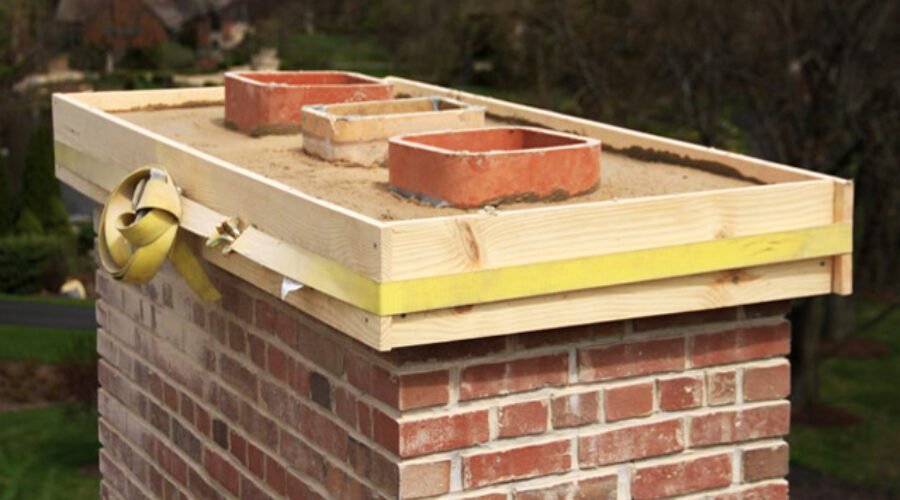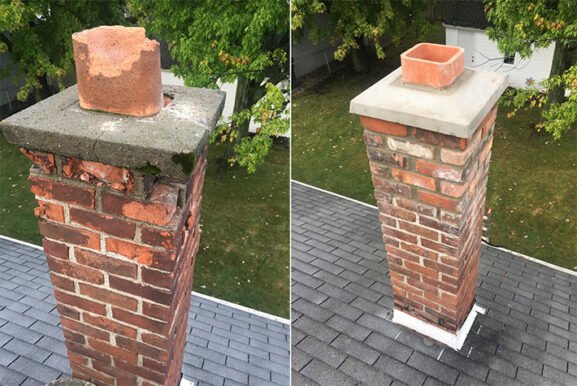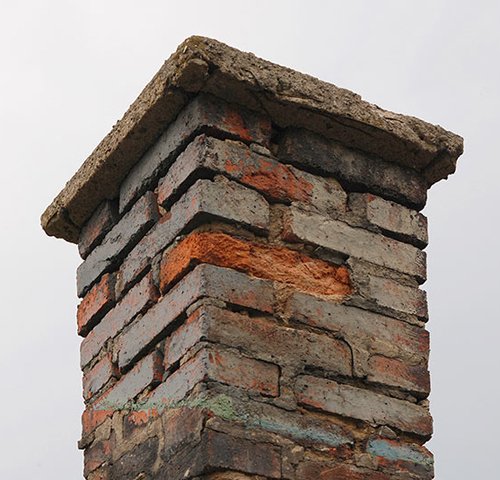Why Timely Concrete Chimney Repair Is Essential for a Safe and Efficient Home
Key Takeaways
- Concrete chimneys can develop structural problems over time due to weather, age, and moisture exposure
- Early repairs can prevent more serious damage such as chimney collapse or water leaks into your home
- Cracking, spalling, and mortar deterioration are key signs your concrete chimney may need professional attention
- Routine inspections and quality repair methods help extend the life of your chimney and protect your home investment
Understanding the Role of Concrete in Chimney Construction
Concrete is commonly used in chimney structures for its durability and fire-resistant qualities. It can form part of the crown, flue cap, or the entire chimney shaft. However, even though it’s tough, concrete is not immune to wear. Exposure to freeze-thaw cycles, moisture, and heat from the fireplace can lead to cracks and surface damage over time.
If left untreated, these issues can evolve into major safety hazards, including structural instability or moisture intrusion into the home. A well-maintained concrete chimney plays a vital role in safe smoke ventilation and preserving your roofline.
Common Signs That Indicate Your Concrete Chimney Needs Repair
It’s easy to overlook chimney issues until they become visible. But knowing what to watch for can help you take action early. Common warning signs include:
- Visible cracking in the concrete crown or shaft
- Spalling, where surface layers begin to flake off
- Water stains or discoloration on nearby ceilings or walls
- Crumbling mortar joints, which can affect the structural integrity of the chimney stack
These signs indicate damage that can compromise both safety and efficiency. Catching these problems early prevents more invasive and expensive repairs down the line.
What Causes Concrete Chimney Damage Over Time
Concrete is strong, but it can degrade due to several external forces. The most common contributors to damage include:
- Moisture penetration, especially when crowns or caps are poorly sealed
- Freeze-thaw cycles, where water seeps into cracks, freezes, and expands
- Acidic residue from combustion gases, which can slowly erode concrete surfaces
- Poor initial construction, such as inadequate reinforcement or improper slope on the crown
These issues often work in combination, slowly wearing down the concrete’s protective qualities. Areas with heavy rainfall or harsh winters are particularly vulnerable.
How Professionals Approach Concrete Chimney Repair
A professional chimney technician typically begins with a thorough inspection to assess the extent of damage. Repair methods vary depending on the condition and severity but often include:
- Crown sealing or resurfacing, using waterproof materials to protect against moisture
- Crack repair, where epoxy or mortar is injected into fissures to restore strength
- Tuckpointing, which involves removing and replacing deteriorated mortar between concrete blocks
- Spalling treatment, where damaged layers are removed and replaced with fresh mortar or patching compounds
In extreme cases, rebuilding parts of the chimney may be necessary. The goal is always to restore both form and function, ensuring the chimney is safe and weatherproof.
Why Chimney Crown Repair Should Never Be Ignored
The chimney crown is the slab of concrete that sits atop your chimney and helps direct water away. When cracked or improperly sloped, it allows water to seep into the chimney and brickwork. This is a primary cause of long-term chimney deterioration.
Repairing the crown might involve applying a waterproof sealant or recasting the entire slab with a proper overhang and slope. This seemingly small fix can significantly extend the life of your entire chimney system.
According to the Chimney Safety Institute of America, chimney crowns should always be constructed with durable concrete and sloped away from the flue to prevent water pooling (CSIA).
The Role of Chimney Liners in Concrete Chimney Systems
Many homeowners don’t realize that even a concrete chimney needs a proper liner. The liner protects the chimney walls from the corrosive byproducts of combustion and helps ensure efficient draft.
Over time, heat and gases can damage the liner, especially if the chimney is not regularly maintained. Re-lining with stainless steel or a cast-in-place liner is a common upgrade during concrete chimney repairs, helping improve safety and compliance with local building codes.
Long-Term Maintenance Tips to Prevent Recurring Damage
Preventative care can make a huge difference in the life span of a concrete chimney. Here are a few best practices:
- Schedule annual inspections, especially before heavy use seasons
- Install a chimney cap to prevent rain, debris, and animals from entering
- Apply a waterproof sealant every few years to protect the crown and masonry
- Clear surrounding vegetation to prevent root growth or leaves clogging the chimney
These actions cost far less than emergency repairs and keep your chimney functioning safely year-round.
When Repair Is No Longer Enough and Rebuilding Is the Best Option
Sometimes, repair efforts aren’t enough—especially if the chimney has suffered prolonged neglect, has shifted structurally, or shows signs of internal collapse. In such cases, a full or partial rebuild is the safest choice.
Rebuilding offers the opportunity to upgrade your chimney with modern materials, better waterproofing systems, and a properly sized flue liner. While more expensive upfront, it eliminates the need for repeated patch jobs and significantly boosts long-term home value.
Making Smart Choices for a Safer Chimney
Investing in timely concrete chimney repair is not just a maintenance issue—it’s a safety measure. Ignoring small cracks or minor water leaks can lead to costly structural failures or dangerous conditions like carbon monoxide exposure.
By addressing issues early and working with qualified professionals, homeowners can ensure their chimney remains safe, efficient, and structurally sound for years to come. Whether it’s sealing the crown, relining the flue, or repairing mortar joints, taking action today helps protect your home’s comfort and value tomorrow.


